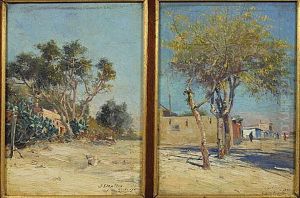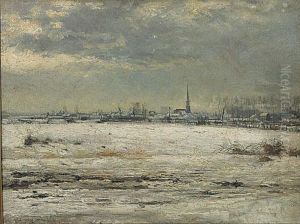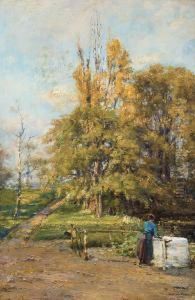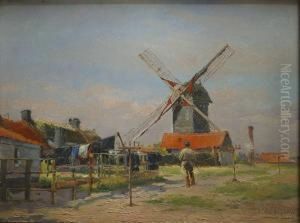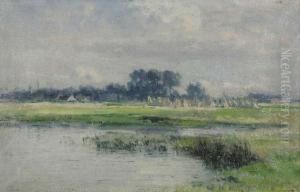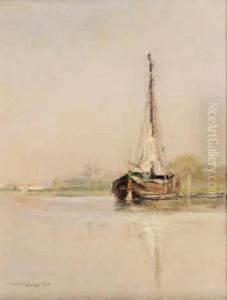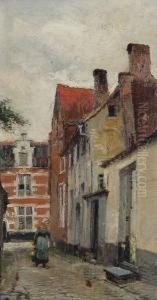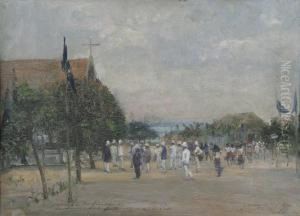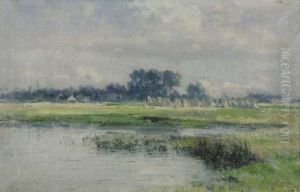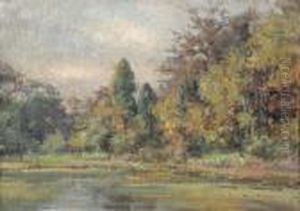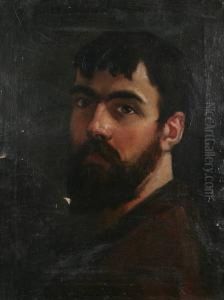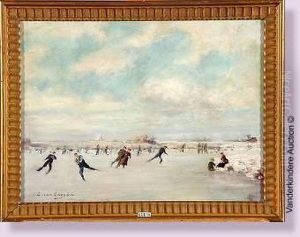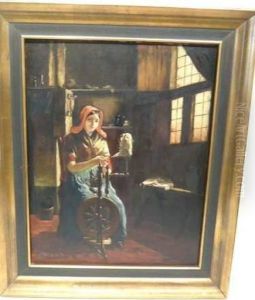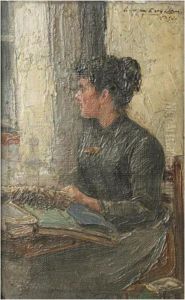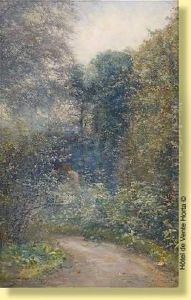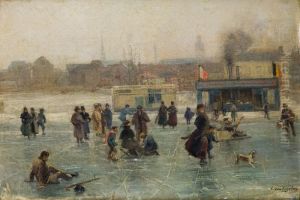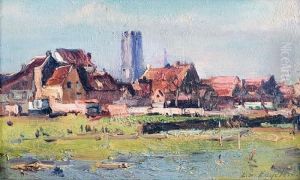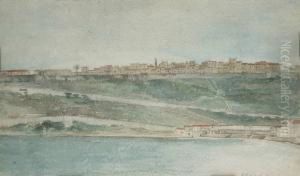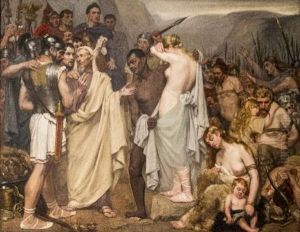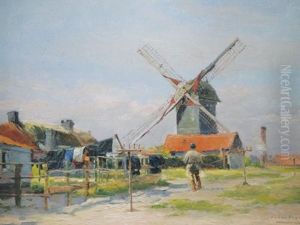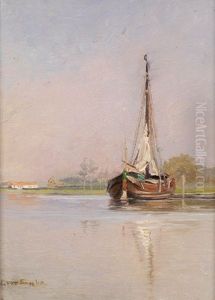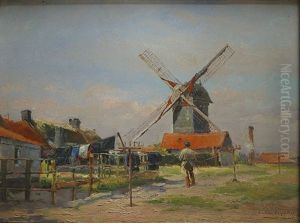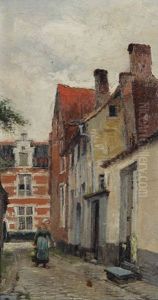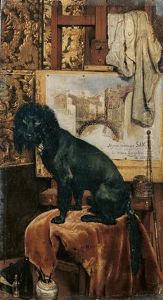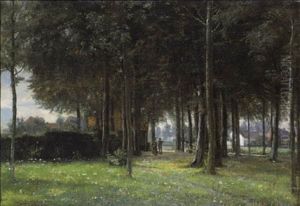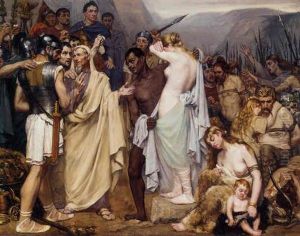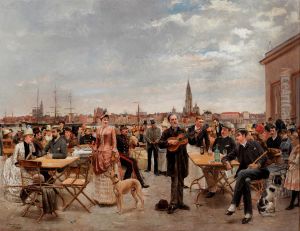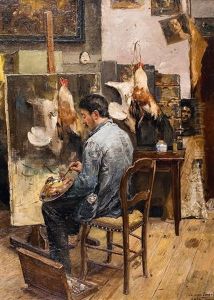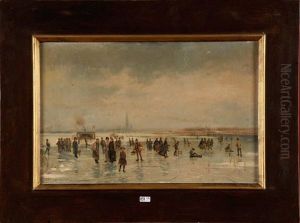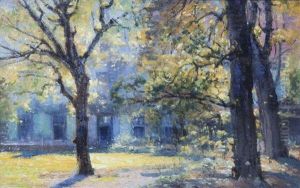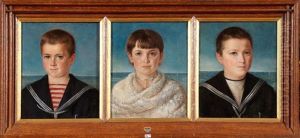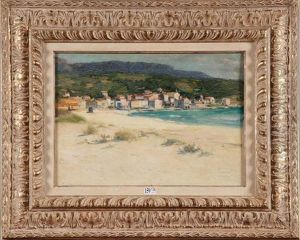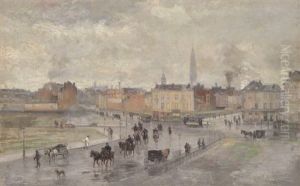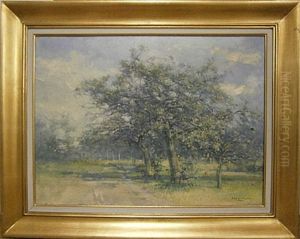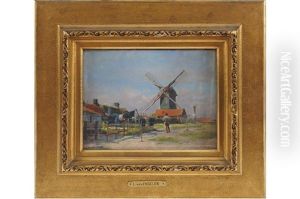Louis Van Engelen Paintings
Louis Van Engelen was a notable Belgian painter and graphic artist whose work spanned the late 19th and early 20th centuries. Born in Antwerp in 1857, Van Engelen showed an early interest in the arts, a passion likely nurtured by the vibrant cultural scene of his hometown, a city renowned for its rich artistic heritage. He pursued his artistic education at the Royal Academy of Fine Arts in Antwerp, where he developed a strong foundation in traditional painting techniques and was exposed to the evolving trends of European art. Van Engelen's work is characterized by its diversity, encompassing landscapes, portraits, and genre scenes. He was particularly admired for his ability to capture the nuances of natural light and atmospheric effects, attributes that made his landscapes especially compelling. Despite being less known internationally than some of his contemporaries, Van Engelen's contributions to Belgian art were significant, and his works were exhibited in several key European cities throughout his career. His artistic style evolved over the years, initially influenced by the realistic and detailed approach of the Flemish masters. However, as he matured, Van Engelen began experimenting with more impressionistic techniques, reflecting broader changes within the art world at the time. This transition in style allowed him to explore new themes and techniques, including the use of bolder colors and looser brushwork, which added a vibrant energy to his later works. Louis Van Engelen's career also included teaching, sharing his knowledge and skills with the next generation of artists. He remained active in the artistic community of Antwerp, contributing to its cultural life until his death in 1940. Today, his works are held in various collections, both in Belgium and internationally, testament to his enduring legacy in the art world.
